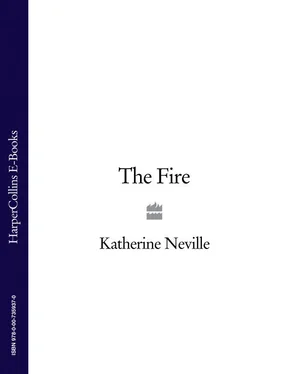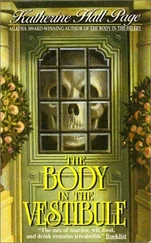‘My mother?’ It was all I could muster.
Lily nodded. ‘Cat’s disappearance today can mean only one thing. I suspected it when I first heard her telephone message inviting me here. It now appears that this was only the first step in drawing us all out on center board like this. Now I fear that my suspicions were right: The Game has begun anew.’
‘But if this Game ever really existed, if it was so dangerous,’ I protested, ‘why would she risk setting it in motion again, as you’re saying, by inviting us here?’
‘She had no choice,’ said Lily. ‘As in all chess games, it’s White that must have made the first move. Black can only counter. Perhaps her move would be the sudden appearance of the long-sought third part of the puzzle that your mother has left here for us to find. Perhaps we’ll discover some different clues to her strategy and tactics—’
‘But Mother’s never played chess in her life! She hates chess,’ I pointed out.
‘Alexandra,’ said Lily, ‘today – Cat’s birthday, the fourth day of the fourth month – is a critical date in the history of the Game. Your mother is the Black Queen.’
Lily’s tale began with a chess tourney she’d attended with my mother thirty years ago, the first time she and my mother had met my father, Alexander Solarin. During a recess in that match, my father’s opponent had died under mysterious circumstances, which later proved to be murder. This seemingly isolated event, this death at a chess game, would be the first in an onslaught that would soon sweep Lily and my mother into the vortex of the Game.
For several hours, as we three sat in silence, Lily recounted a long and complex story that I can only summarize here.
The Grandmaster’s Tale
One month after that tourney at the Metropolitan Club, Cat Velis departed New York upon a long-planned consulting assignment in North Africa for her firm. A few months later Mordecai, my grandfather and chess coach, sent me to Algiers to join her.
Cat and I knew nothing of this most dangerous of all games in which we ourselves, as we soon discovered, were mere pawns. But Mordecai had long been a player. He knew that Cat had been chosen for a higher calling and that when it came to close maneuvers, she might need my help.
In the Casbah of Algiers, Cat and I met with a mysterious recluse, the widow of the former Dutch consul to Algeria, and a friend of my grandfather, Minnie Renselaas. The Black Queen. She gave us a diary written by a nun during the French Revolution that recounted the history of the Montglane Service and the role that this nun, Mireille, had played in it. Mireille’s diary later proved vital to understanding the nature of the Game.
Minnie Renselaas enlisted Cat and me to penetrate deep into the desert, to the Tassili Mountains, and retrieve eight of the pieces she’d buried there. We braved Saharan sand-storms and pursuit by the secret police, as well as a vicious opponent, the ‘Old Man of the Mountain,’ an Arab named El-Marad who, we soon discovered, was the White King. But at last we found Minnie’s pieces hidden in a cave in the Tassili protected by bats. We clawed in the rubble to extract the eight pieces.
I shall never forget the moment when I first saw their mysterious glow: a King and a Queen, several pawns, a Knight, and a camel, all of a strange gold or a silvery material, and caked with uncut jewels in a rainbow of colors. There was something otherworldly about them.
After many travails, at last we returned with the pieces. We reached a port not far from Algiers, only to be seized by the same dark forces still pursuing us. El-Marad and his thugs kidnapped me, but your mother brought reinforcements to my rescue; she struck El-Marad on the head with her heavy satchel of chess pieces. We escaped and brought the bag of pieces to Minnie Renselaas in the Casbah. But our adventure was far from over.
With Alexander Solarin, Cat and I escaped from Algeria by sea, pursued by a dreadful storm, the Sirocco, that nearly tore our ship apart. During months of boat repairs on an island, we read the diary of the nun Mireille, which enabled us to solve some of the mystery of the Montglane Service. When our ship was ready, we three crossed the Atlantic by sea and arrived in New York.
There we discovered we had not left all the villains behind in Algeria, as we’d hoped. A group of scoundrels lay in wait – my mother and my uncle among them! And another six pieces had been hidden in those jammed drawers in a secretary in my family’s apartment. We defeated the last of the White Team and captured these extra six pieces.
At my grandfather’s house in Manhattan’s Diamond District, we all assembled: Cat Velis, Alexander Solarin, Ladislaus Nim – all of us players on the Black Team. Only one was missing, Minnie Renselaas herself, the Black Queen.
Minnie had left the Game. But she’d left something behind as a parting gift for Cat: the last pages of the nun Mireille’s diary, which revealed the secret of the marvelous chess set. It was a formula that, if solved, could do far more than create or destroy civilizations. It could transform both energy and matter and much, much else.
Indeed, in Mireille’s diary she stated that she had worked alongside the famous physicist, Fourier, in Grenoble to solve the formula herself, and she claimed she had succeeded in 1830, after nearly thirty years. She possessed seventeen pieces – more than half of the set – as well as the cloth, embroidered with symbols, that had once covered the board. The bejeweled chessboard itself had been cut into four pieces and buried in Russia by Catherine the Great. But the Abbess of Montglane, herself imprisoned in Russia soon thereafter, had secretly drawn it from memory on the lining of her abbatial gown, in her own blood. This drawing Mireille also now possessed.
But though Mireille had only had seventeen pieces of the Montglane Service back then, we ourselves now had twenty-six, including those of the opposing team and others that had been buried for many years, as well as the cloth that covered the board – perhaps enough to solve the formula, despite its clear dangers. We were only missing six of the pieces and the board itself. But Cat believed that by hiding the pieces for once and all where no one could ever find them, she could stop this dangerous Game.
As of today, I believe we’ve learned she was mistaken.
When Lily had finished her story, she looked drained. She arose, leaving Zsa-Zsa sacked out like a wet sock in the pile of pillows, and she crossed the room to the desk where the soiled piece of fabric lay open to expose its illustrated chessboard, a painting that we now understood had been drawn, nearly two hundred years ago, in abbatial blood. Lily ran her fingers over the strange array of symbols.
The air in the room was filled with the rich scent of bubbling beef and wine; you could hear the log cracking from time to time. For a very long time, nobody spoke.
At last, it was Vartan who broke the silence.
‘My God,’ he said, his voice low, ‘what this Game has cost you all. It is hard to imagine that such a thing ever existed – or that it might really be happening again. But I don’t understand one thing: If what you say is true – if this chess service is so dangerous; if Alexandra’s mother already owns so many pieces of the puzzle; if the Game has begun again and White has made its first move, but nobody knows who are the players – what would she gain by inviting so many people here today? And do you know what is this formula she spoke of?’
Key was looking at me with an expression suggesting she might already know.
‘I think the answer may be staring us in the face,’ said Key, speaking for the first time. We all turned to look at her, as she sat there beside the piano.
Читать дальше












